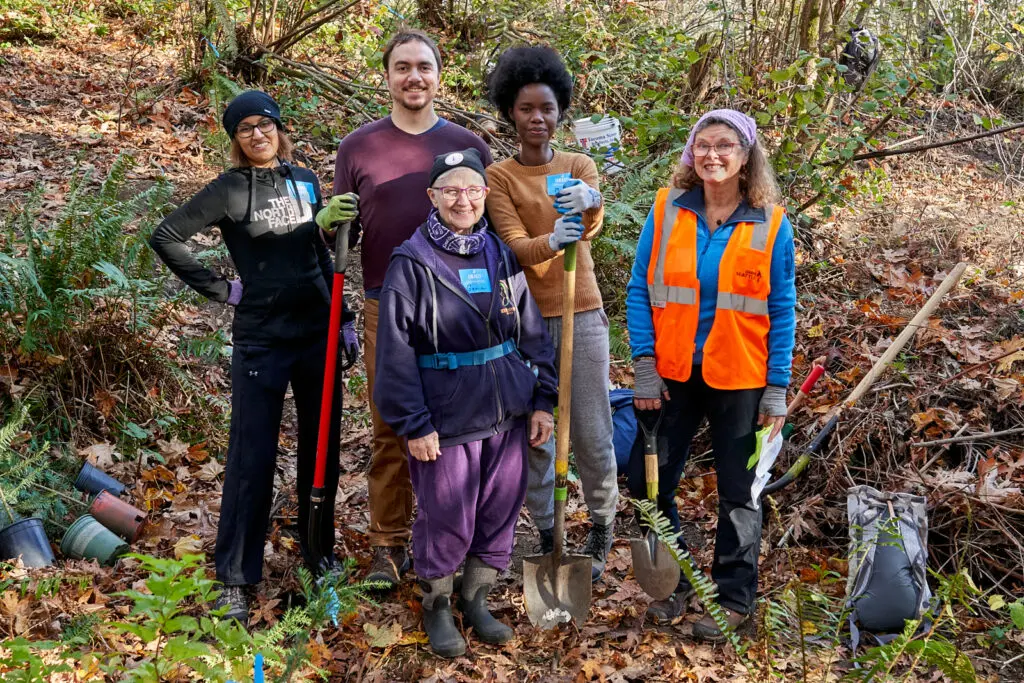SEATTLE, WA – The Hood Canal Salmon Enhancement Group and Forterra, with funding from state and federal grant sources as well as from a private loan, recently protected the 297-acre Lower Big Beef Creek property near Seabeck, preserving its salmon spawning and rearing habitat critical to recovery efforts in Hood Canal and Puget Sound.
The site includes: the estuary of Big Beef Creek where it enters Hood Canal, views of the Olympic Mountain range, Toandos Peninsula, and the entrance to Dabob Bay, and hundreds of acres of healthy, riparian forest. From this place, the creek provides critical spawning and rearing habitat to threatened salmon, particularly Hood Canal Summer Chum, Chinook, and Steelhead. The estuary is a popular location for bird watching, particularly for migratory bald eagles who come to the creek to catch spawning salmon.
“We have been working for over 15 years to restore this important habitat, and this land conservation is another significant step forward,” says Mendy Harlow, Executive Director, at The Hood Canal Salmon Enhancement Group.
Funding for the project was provided by the US Fish and Wildlife Service National Coastal Wetlands grant as well as multiple grants from the Washington State Recreation and Conservation Office: Washington Wildlife and Recreation Program, Salmon Recovery Funding Board, Puget Sound Acquisition and Restoration, and Estuary and Salmon Restoration Program grants.
Forterra, a non-profit organization, provided critical support to complete the purchase with a low-interest loan guaranteed by the Russell Family Foundation to bridge the gap between the grant funding and sale price. Forterra and the Salmon Enhancement Group must continue to raise additional public and private funding sources to repay this loan, as well as to provide for long-term stewardship for the property.
Kathleen Simpson, Chief Financial Officer, at the Russell Family Foundation says, “We deeply appreciate Forterra’s ability to keep important land like Big Beef Creek in conservation and are pleased that we can help make this work happen.”
Long term conservation and stewardship plans include removing the remaining buildings on the property as well as any in-stream blockage. The area will be preserved for habitat and open to the public for recreation benefits, such as bird watching and fishing.



